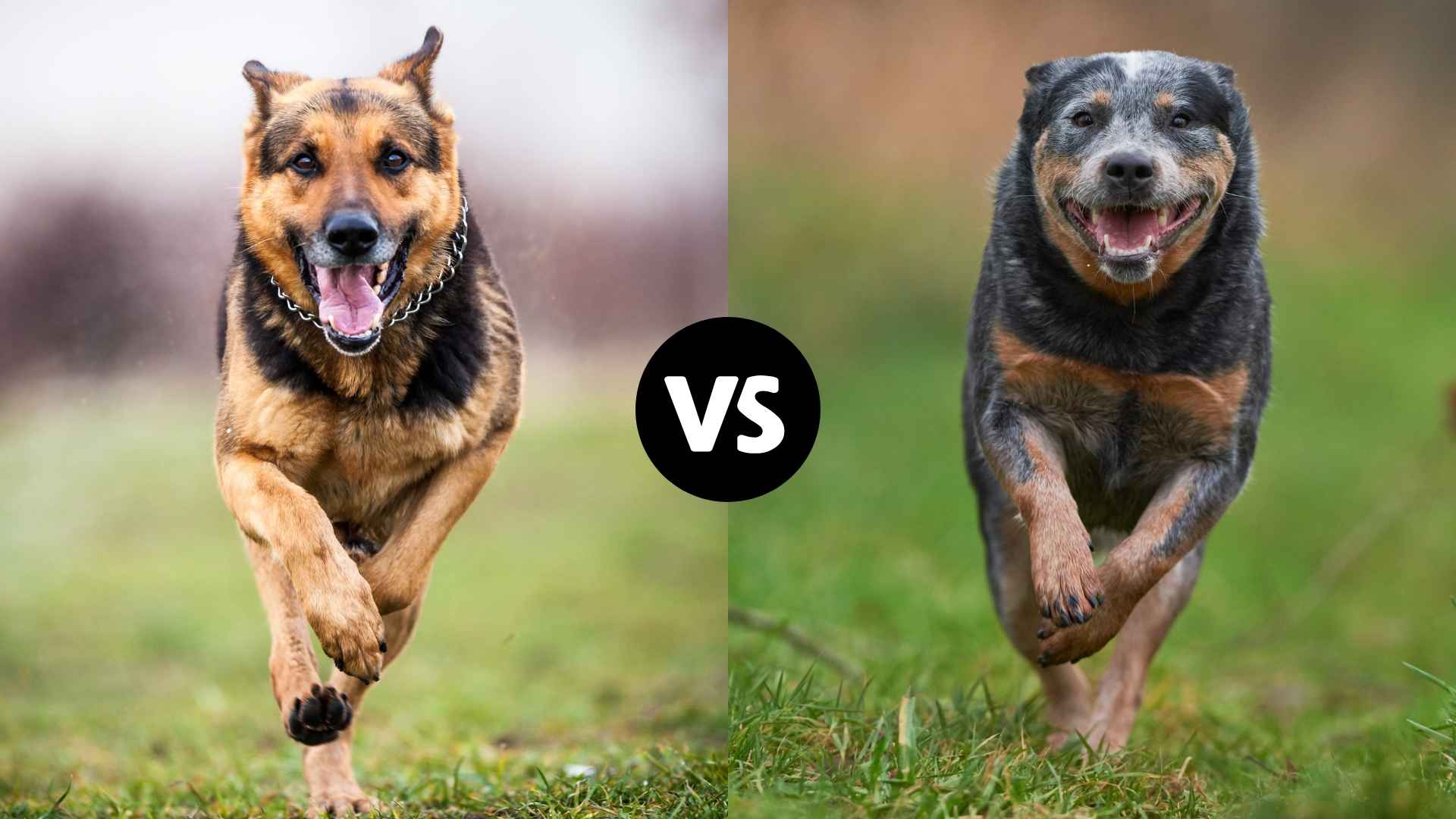There’s something fascinating about comparing two purebred dogs that have spent generations helping humans work, protect, and thrive alongside livestock. In the case of the German Shepherd vs Australian Cattle Dog, you’re not just looking at two highly capable working dogs—you’re looking at breeds that are intelligent, loyal, and driven by purpose.
Both the German Shepherd (or GSD) and the Australian Cattle Dog were bred to herd, guard, and work cattle or sheep. And while they share a common goal, the path each breed took is full of surprises.
In this guide, we’ll break down the differences between these two high-energy, incredibly smart dogs and help you discover which one could be your new favorite pup.
German Shepherd vs. Australian Cattle Dog
German Shepherd | Australian Cattle Dog | |
Height | 22-26 inches | 17-20 inches |
Weight | 50-90 pounds | 35-50 pounds |
Colour | Black, Gray, Sable, White, Liver, Blue, Bi-color | Blue, Grey, Red, Blue Speckled, Blue Mottled |
Coat | Double coat | Double coat |
Shed Level | High | Moderate |
Temperament | Gentle and aloof | Loyal |
Life Expectancy | 7-10 years | 12-16 years |
Energy Levels | Active | Active |
Size & Height
German Shepherd
The German Shepherd (or GSD) is one of the larger pure-bred dogs commonly seen in police and military work. Their broad chest, long legs, and muscular build make them both elegant and powerful.
Height: 22 to 26 inches at the shoulder
Weight: 50 to 95 pounds
Build: Strong, athletic, and well-balanced
Their larger frame makes them more suited for homes with plenty of space, whether that’s a big yard or access to open land for walks and play.
Australian Cattle Dog
The Australian Cattle Dog, also called a Blue Heeler or Red Heeler, is a compact and rugged breed. Though smaller than the GSD, don’t underestimate their strength or endurance.
Height: 17 to 20 inches at the shoulder
Weight: 35 to 50 pounds
Build: Sturdy, compact, and built for action
Their smaller size makes them more adaptable in homes with limited space, as long as they get enough exercise and mental stimulation.
Coat Type & Color Comparison
When comparing the coat types of these two breeds, it’s easy to spot differences that go beyond looks. While both the German Shepherd and the Australian Cattle Dog have double coats designed to protect them from the elements, their grooming needs, appearance, and texture are quite different.
German Shepherd
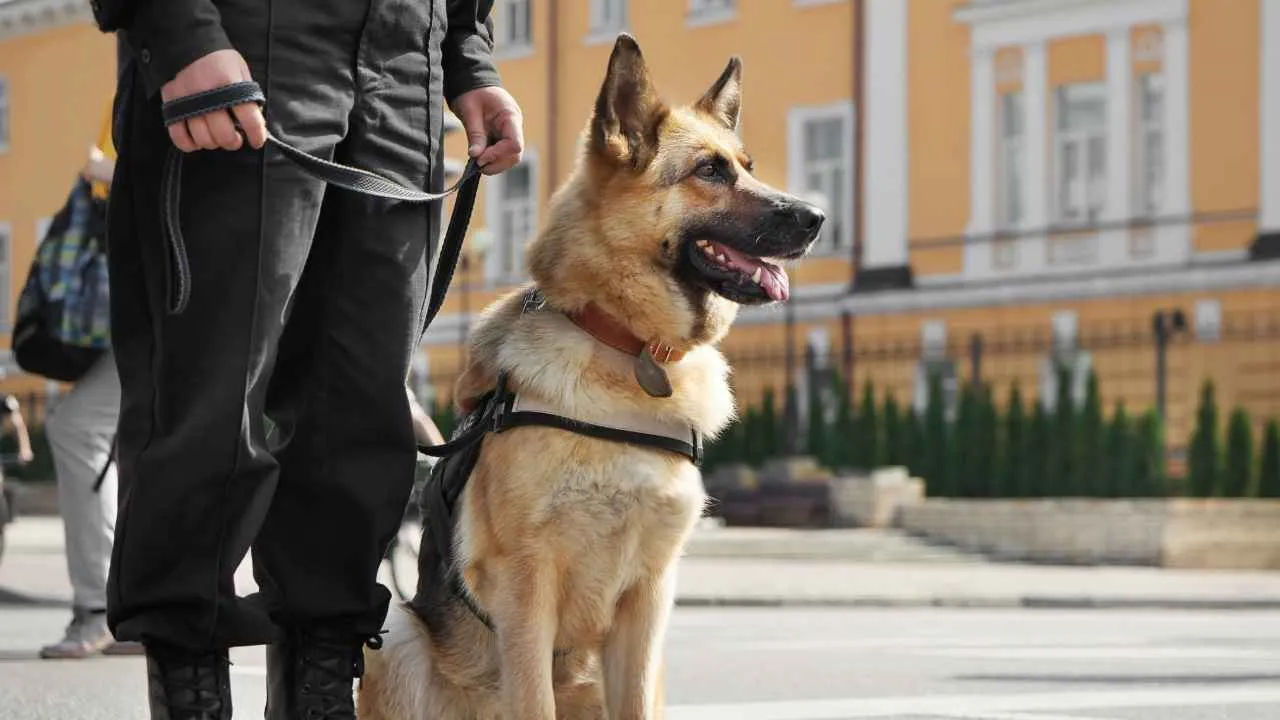
The German Shepherd may look elegant, but their coat requires more attention. With a medium-length double coat that insulates well in both hot and cold weather, they need regular grooming, especially during seasonal shedding.
Coat Length: Short to Medium
Coat Texture: Straight, thick undercoat
Coat Layering: Double
Common Colors: Black & tan, sable, solid black, and occasionally blue or white
Grooming Needs: Moderate to high – weekly brushing and routine baths
PetMD states that this breed sheds heavily, especially in spring and fall. So, if you’re choosing between shelter dogs or looking for the best breed for a low-shedding household, keep in mind that GSDs need a grooming plan from puppy age to keep their coats and skin healthy.
Australian Cattle Dog
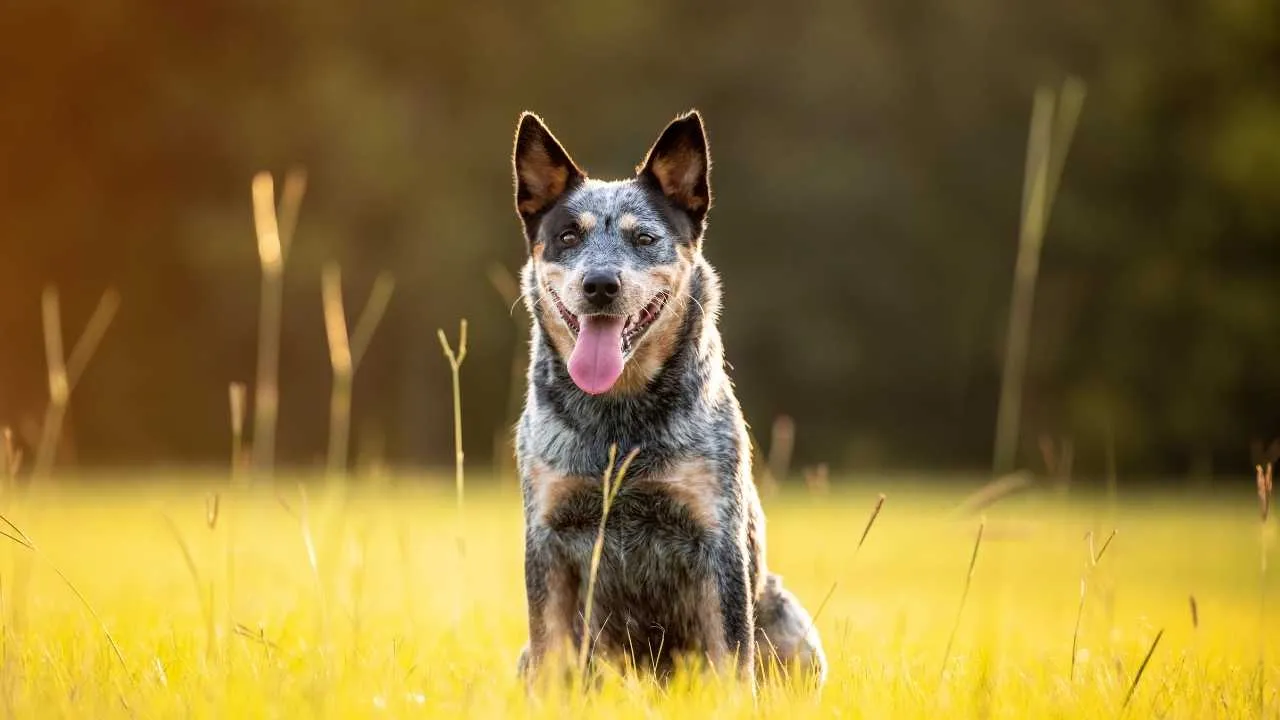
The Australian Cattle Dog is known for its shorter coat, which is weather-resistant and extremely practical for outdoor work. This breed’s coat was built for the rugged Australian outback and rarely needs much more than a quick brushing.
Coat Length: Short
Coat Texture: Straight, dense, and close to the skin
Coat Layering: Double
Common Colors: Blue (mottled or speckled), Red speckled
Grooming Needs: Low – occasional brushing and baths
Their coat sheds lightly year-round, and you’ll rarely find excessive hair on your furniture. If you’re comparing this to other dog breeds, the Cattle Dog is among the easiest to maintain—a huge plus for busy families or first-time owners.
Temperament Differences Between the Breeds
When it comes to temperament, both the German Shepherd and the Australian Cattle Dog are loyal, intelligent, and hardworking, but they express these qualities in different ways.
German Shepherds are known for being emotionally sensitive, obedient, and devoted to their families. They generally get along well with children and other animals, especially if they’re raised together from a young age.
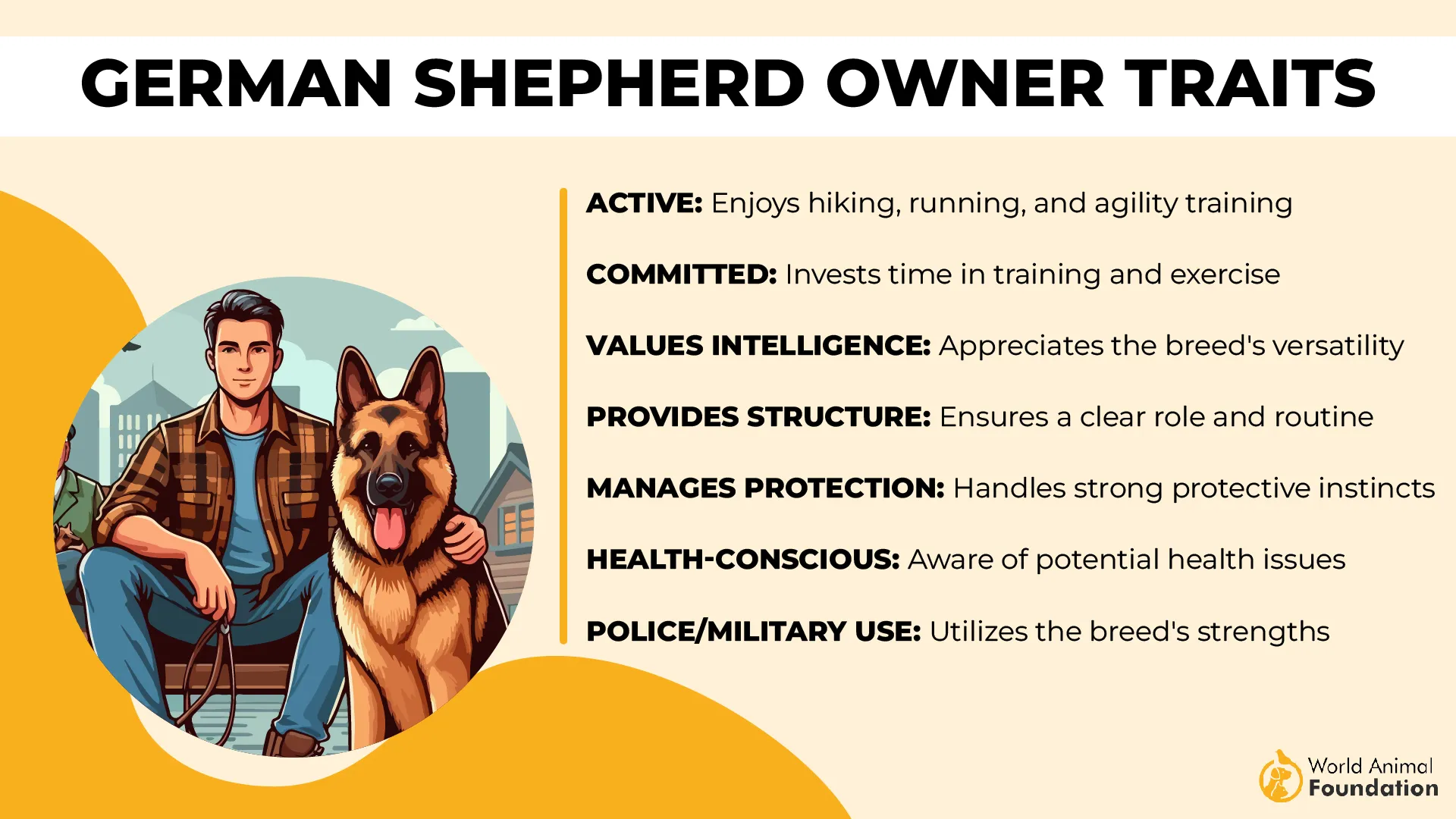
However, AKC says that their natural guarding instinct makes them cautious around strangers, and without proper socialization, they can become overprotective. While they’re not aggressive by nature, poor breeding and lack of training can lead to nervous or reactive behavior.
They also tend to bark more than some other dog breeds, especially when bored or under-stimulated, but this can be managed with consistent training.
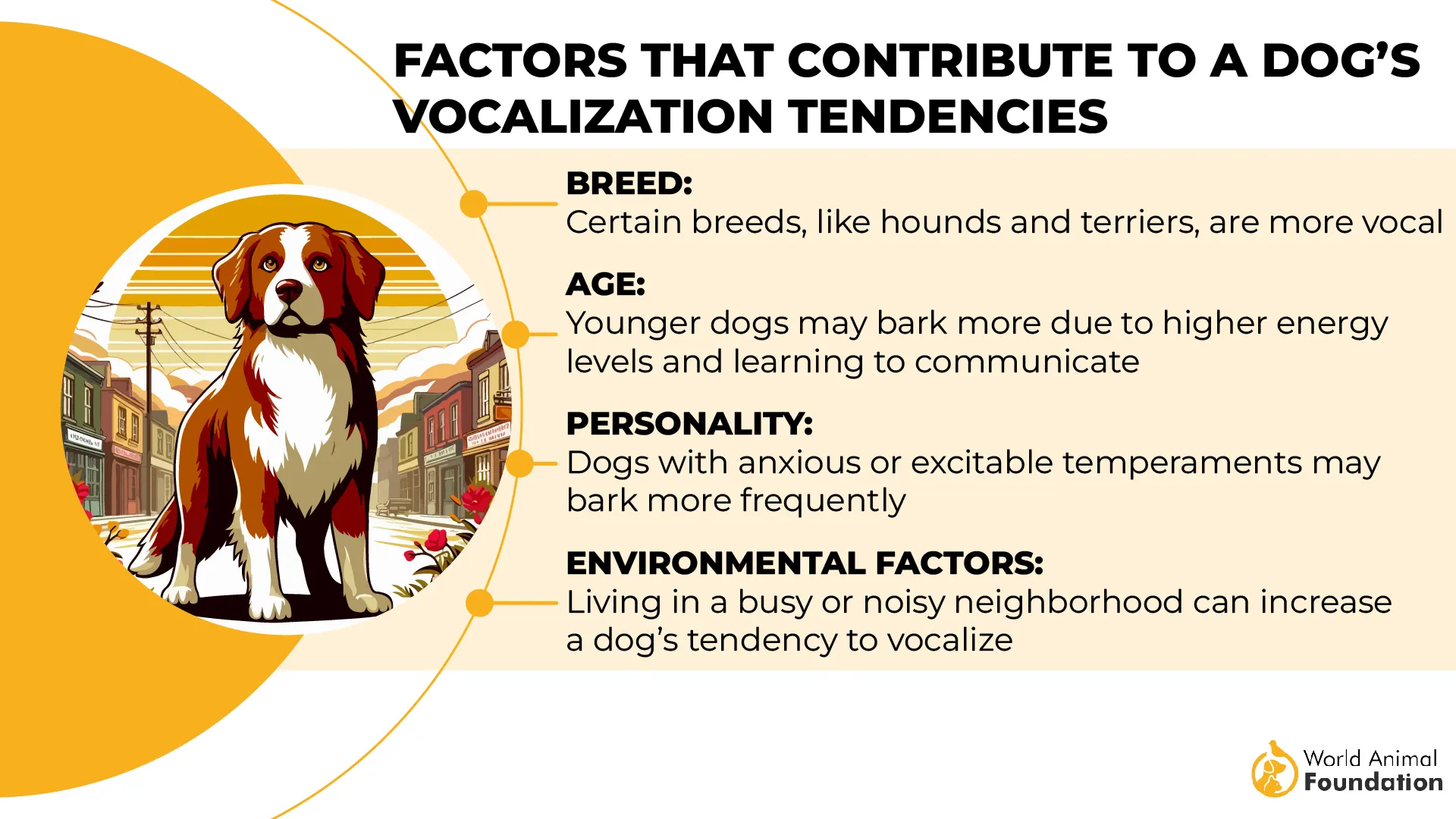
On the other hand, Australian Cattle Dogs—or Blue Heelers and Red Heelers—are bold, alert, and fiercely loyal. They form strong bonds with their owners and can be sweet and playful companions, but their herding instincts often show up in daily life, sometimes through heel-nipping or attempts to herd younger children.
While they’re not big barkers, they are known to be dominant with other dogs if not socialized early. Cattle Dogs tend to do best in homes with older kids and active owners who understand the commitment of raising a high-energy, task-oriented pup.
Level of Independence: Which Is More Self-Reliant?
When it comes to independence, the Australian Cattle Dog is generally more self-reliant than the German Shepherd. Bred to work vast stretches of land and herd cattle with little supervision, Cattle Dogs are known for their strong-willed, do-it-myself attitude.
They’re highly intelligent and confident in their decision-making, which makes them excellent working dogs, but sometimes a challenge for first-time dog owners. A Heeler doesn’t mind spending time alone if they have space, stimulation, and a clear routine.
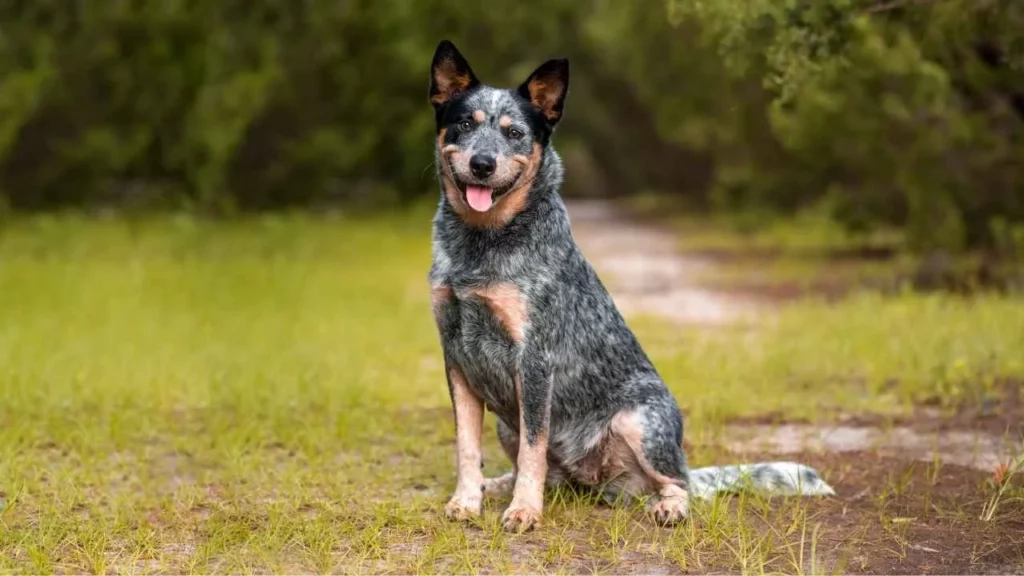
In contrast, German Shepherds are far more people-oriented and thrive when they’re part of the action. While they are smart and capable of working independently, GSDs are deeply bonded with their humans and can develop separation anxiety if left alone too often.
They are sensitive to their surroundings and emotions, always wanting to stay close to their person and be involved in the daily routine. Pedigree mentions that a bored or lonely German Shepherd might become destructive or bark excessively just to get attention.
Trainability: Which Breed Learns Faster?
When it comes to trainability, both the German Shepherd and the Australian Cattle Dog are among the smartest dog breeds out there. But while they’re both quick learners, their learning styles—and how they respond to training—are quite different.
German Shepherd
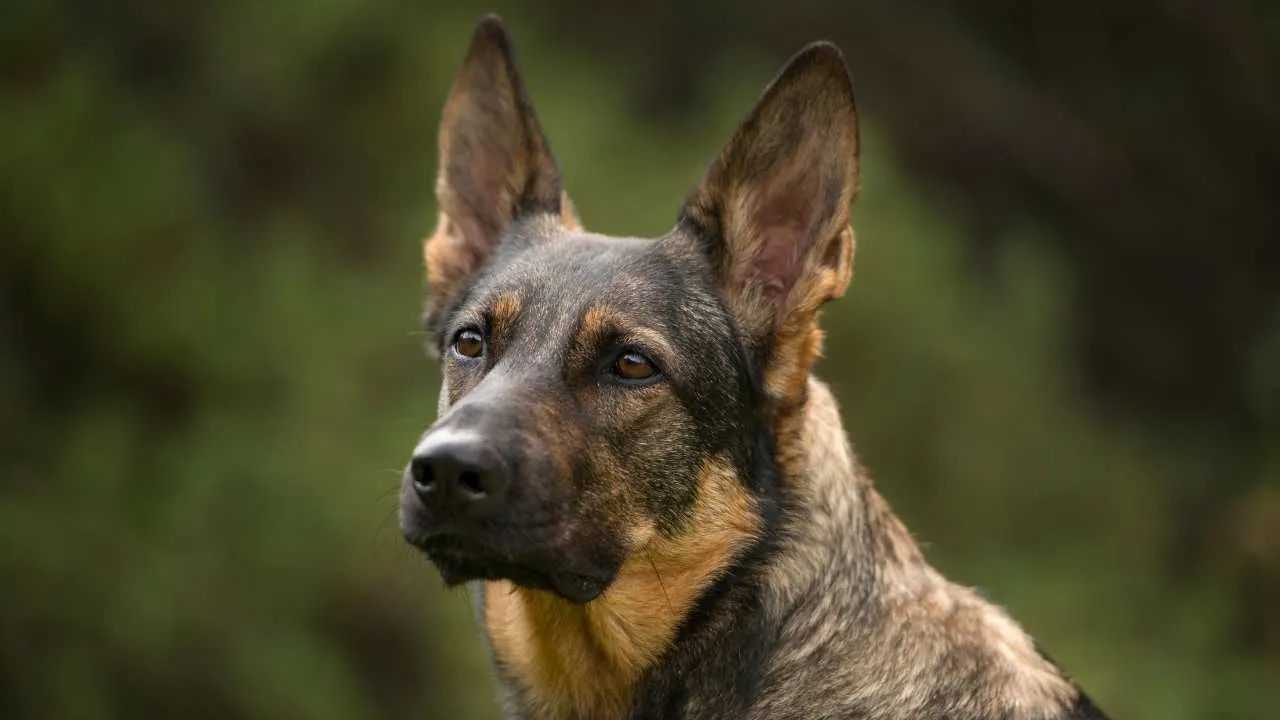
The German Shepherd is eager to please, highly responsive, and naturally obedient.
This breed thrives on structure and does best when training begins as early as 8 weeks old.
Because GSDs are sensitive to their owners’ tone and mood, positive reinforcement works wonders.
They pick up commands quickly, especially when the training is consistent, engaging, and starts before the puppy starts making their own rules.
Without proper exposure to strangers, other animals, and new environments, a GSD may become overly defensive or anxious.
They’re fantastic in formal training settings, whether it’s basic manners, lead-walking, or advanced obedience classes—and they love having a job to do.
Australian Cattle Dog
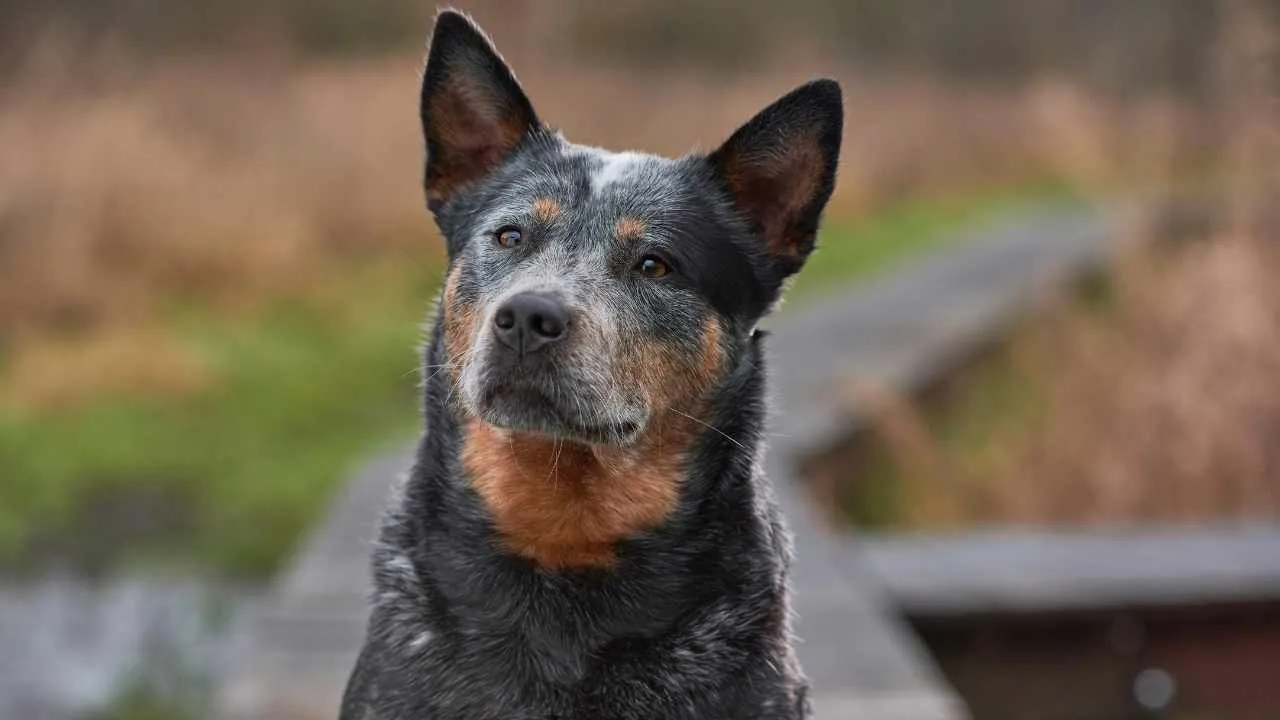
The Australian Cattle Dog (or Blue Heeler) is a sharp, energetic thinker with a border collie-like stubborn streak.
These dogs are smart and enjoy problem-solving, which makes them easy to train, if their independent nature is managed early.
Because Heelers are natural herding dogs, they’ll instinctively try to control movement around them, including chasing kids, cats, or other dogs.
They respond well to treats and praise but need a firm, consistent hand to understand boundaries.
Without early structure, they may try to take charge of the household.
That said, once you establish your role as a leader, training a Cattle Dog becomes a smooth (and even fun) process.
Grooming Needs & Maintenance
While both the German Shepherd and the Australian Cattle Dog are rugged, working dogs built for the outdoors, their grooming needs and maintenance routines differ quite a bit.
Understanding how much time and effort each breed requires for grooming can help you choose the best dog for your lifestyle.
German Shepherd
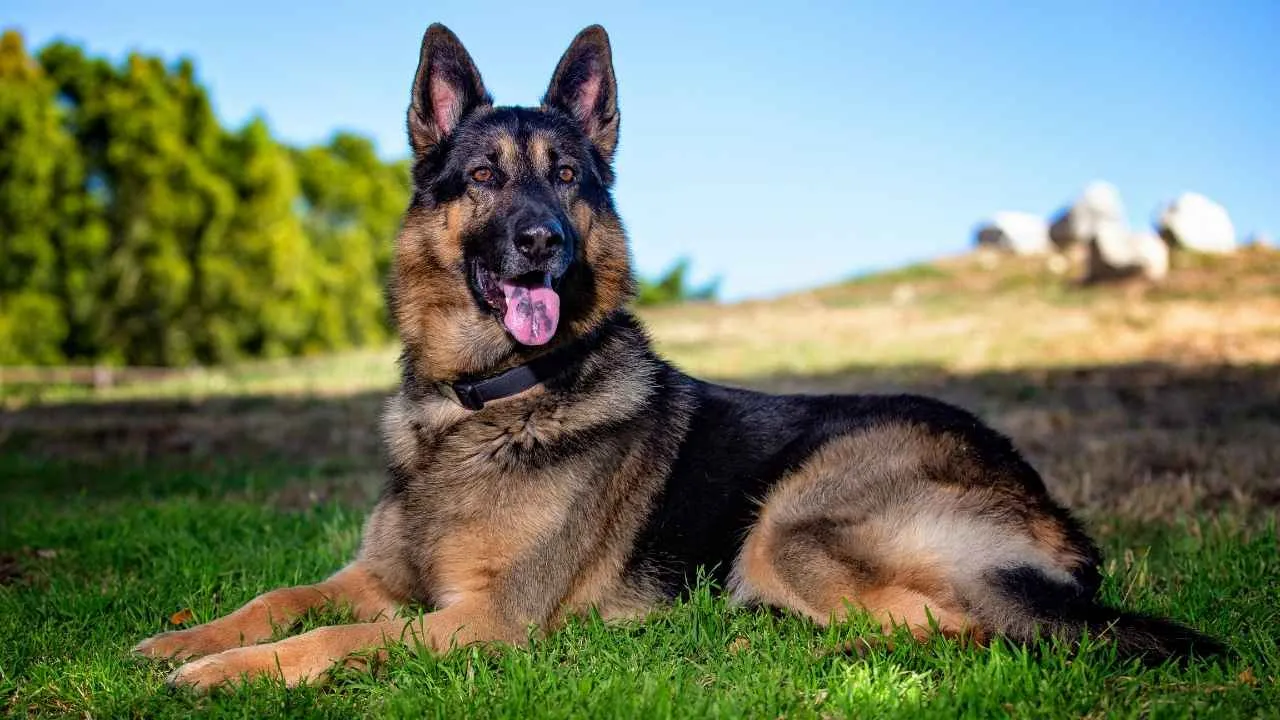
German Shepherds require consistent grooming to stay healthy and comfortable. These dogs are known to shed all the time, so managing loose fur and preventing matting is key.
Routine Maintenance Includes:
Brushing: At least once or twice a week; more frequently during spring and fall shedding seasons.
Bathing: Only when necessary, as over-bathing strips the coat of its natural oils.
Nail Trimming: Every 3–4 weeks to prevent overgrowth or cracking.
Teeth Brushing: At least twice a week to maintain oral health.
Ear Cleaning: Regularly check for dirt, wax buildup, or signs of infection.
Because they shed heavily, brushing your German Shepherd regularly helps reduce fur around the home and keeps their skin healthy. Starting a grooming routine during puppy stages makes it much easier as your GSD grows into adulthood.
Australian Cattle Dog
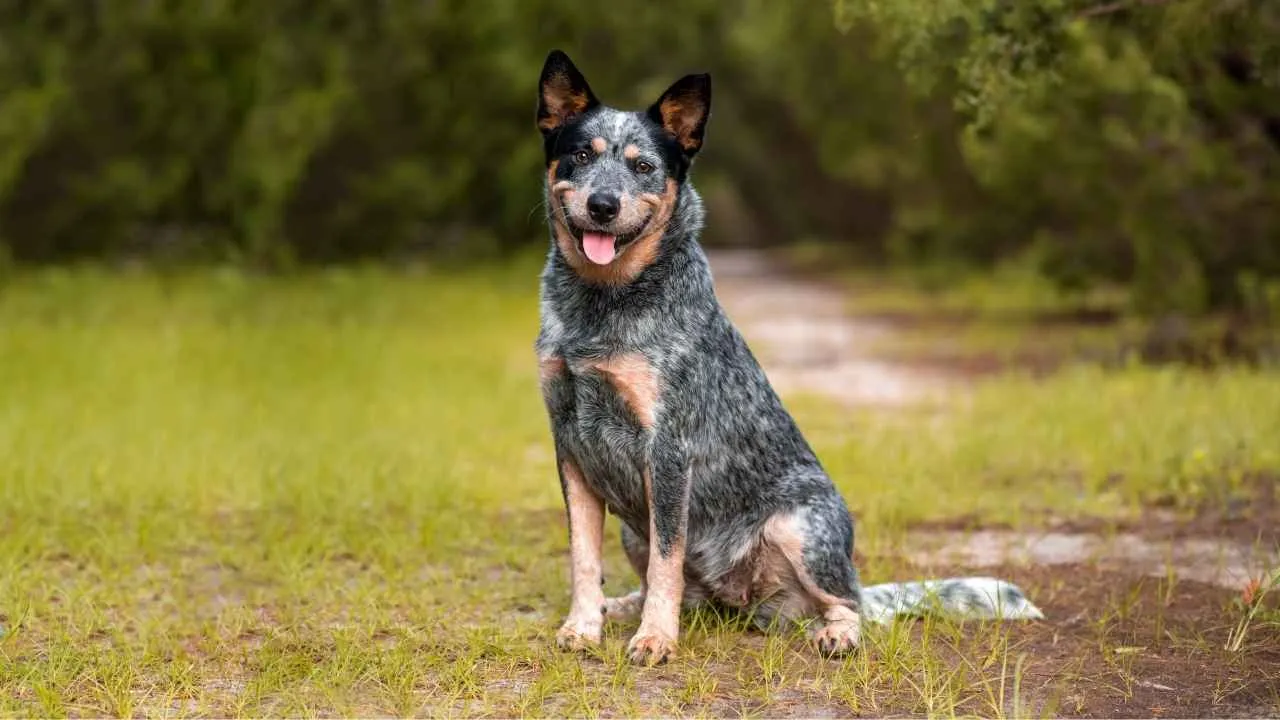
The Australian Cattle Dog is much easier to groom. These dogs are known for their shorter coats and natural resilience to dirt and odor, making them a great low-maintenance option.
Routine Maintenance Includes:
Brushing: Once a week under normal conditions; more often during seasonal shedding.
Bathing: About once a month or when noticeably dirty.
Nail Trimming: Monthly or as needed to avoid discomfort.
Teeth Brushing: Ideally, daily, but at least a few times a week.
Ear Cleaning: Occasional checks and cleaning to prevent infection.
Although they’re easier to maintain, Heelers still need regular attention, especially during shedding seasons. Using a grooming glove or soft brush helps remove loose fur while keeping your pup comfortable and clean.
Conclusion
Choosing between the German Shepherd and the Australian Cattle Dog isn’t just about looks or popularity—it’s about matching a dog’s instincts, energy, and needs with your lifestyle. Both breeds are brilliant, loyal, and hardworking, but they require time, space, and dedication from their owners.
Before bringing one of these incredible dogs into your life, ask yourself: Do you want a companion who thrives on structure and bonding, or one who needs room to roam and a job to do? Either way, you’re not just choosing a pet—you’re gaining a partner. With the right environment, training, and love, both of these working dogs can easily become the best dog you’ve ever had.


